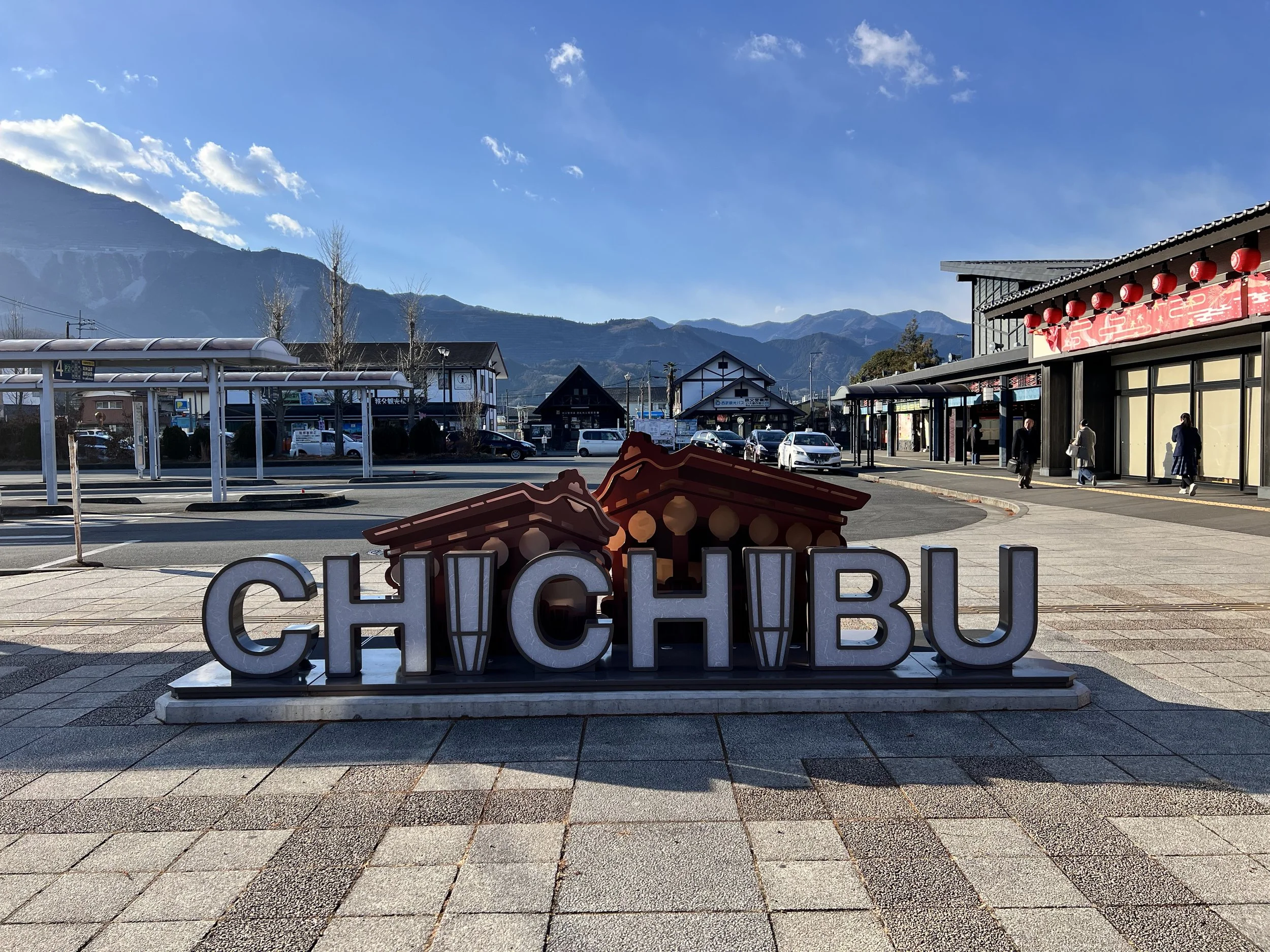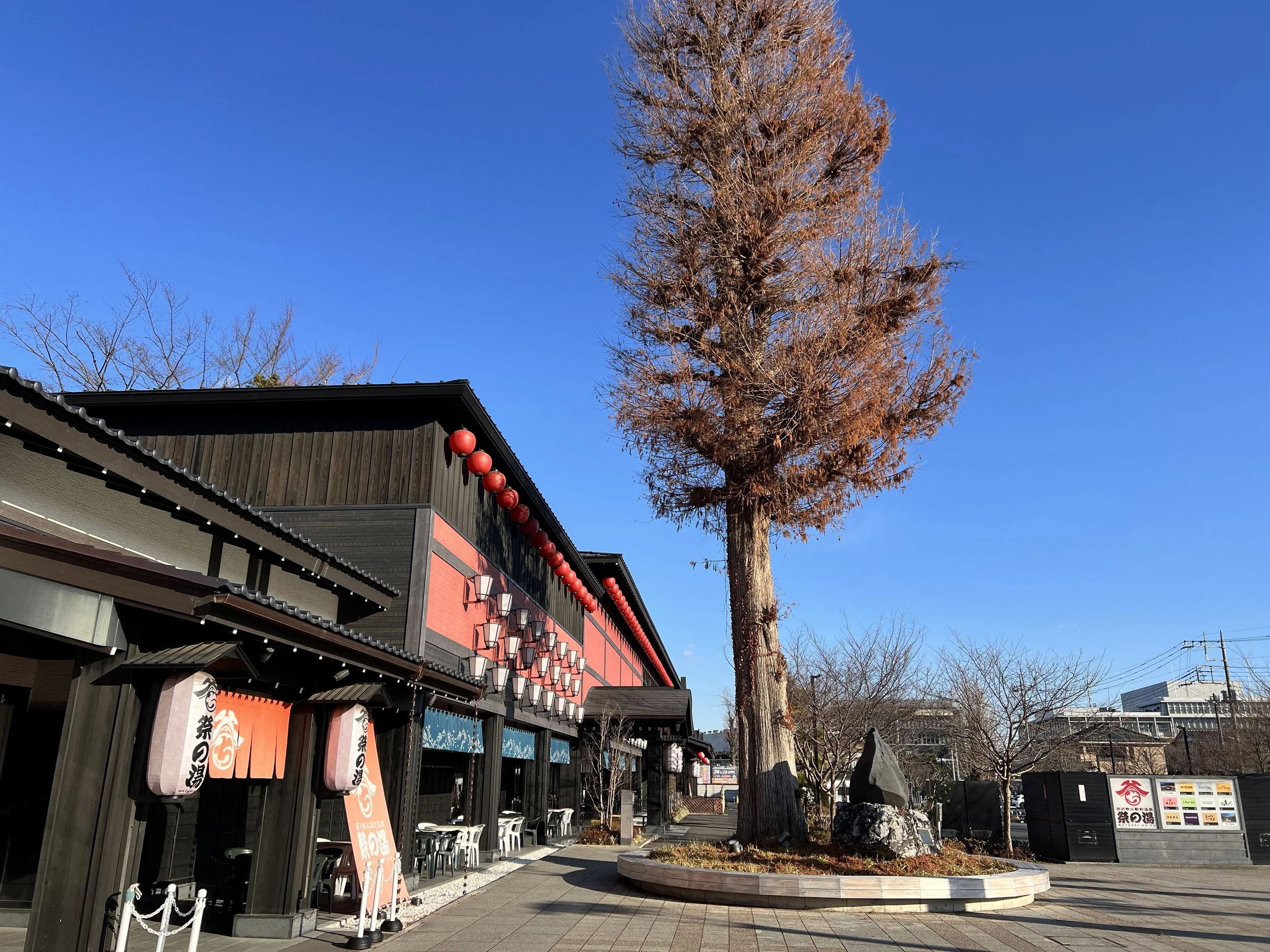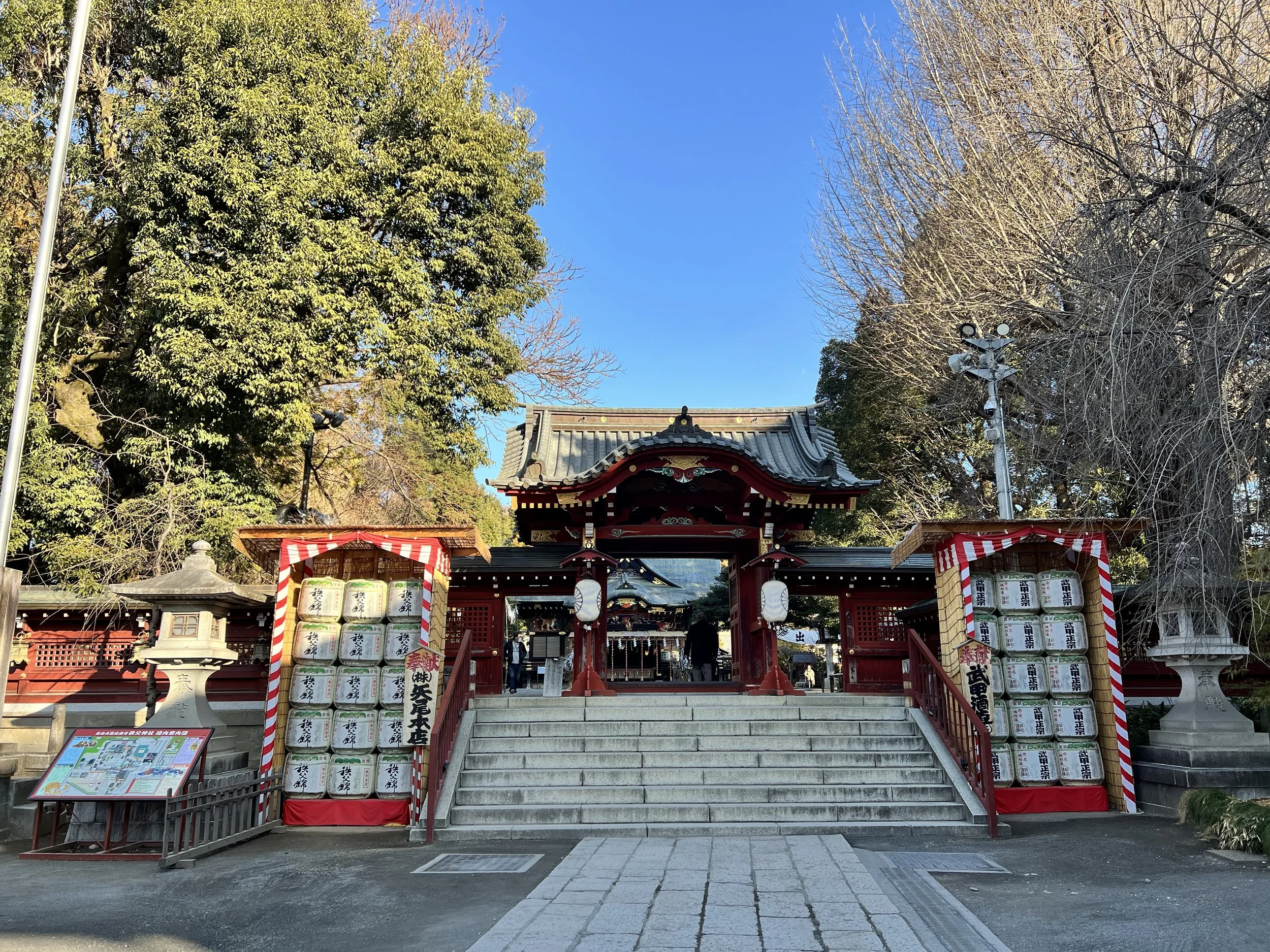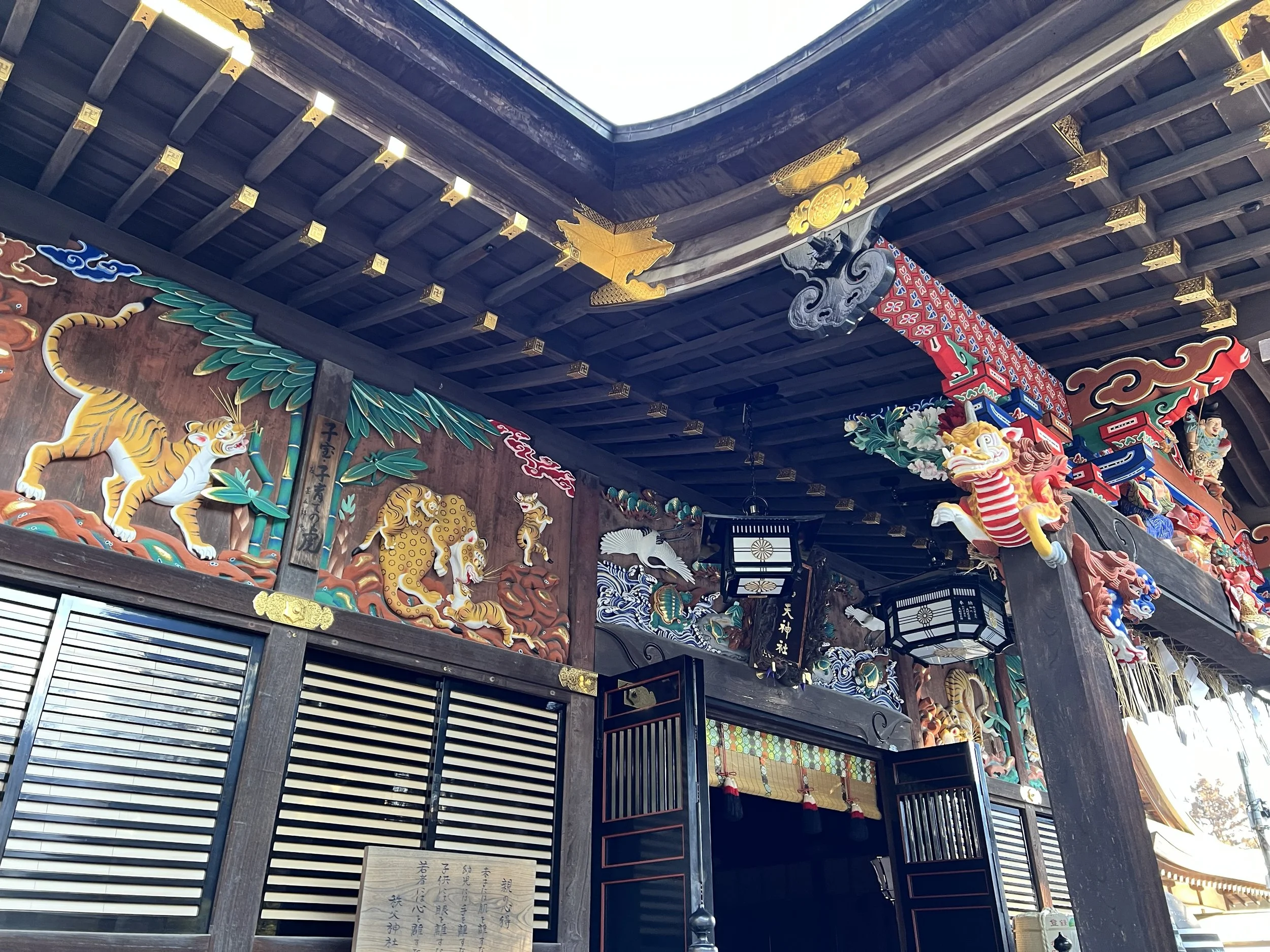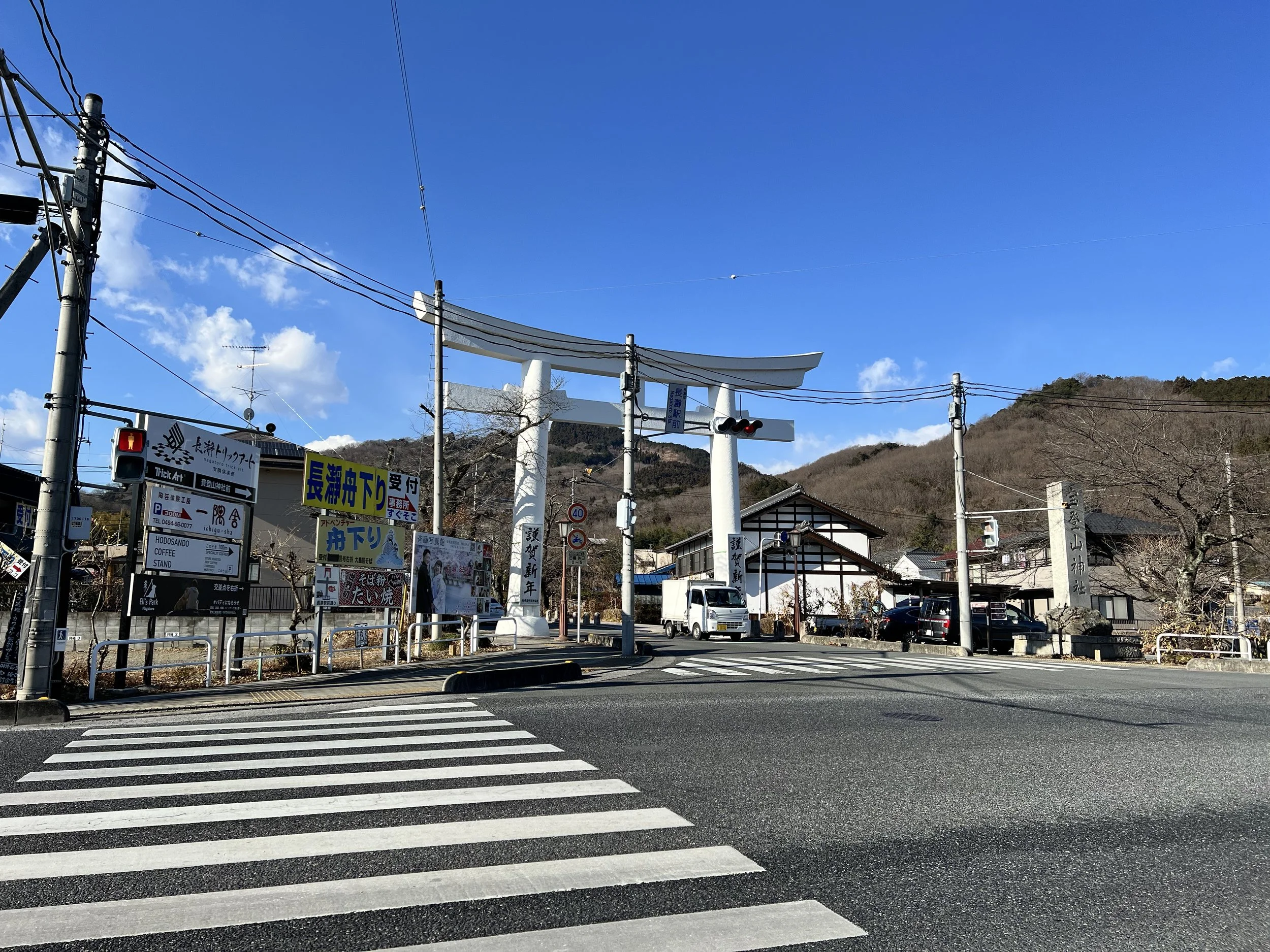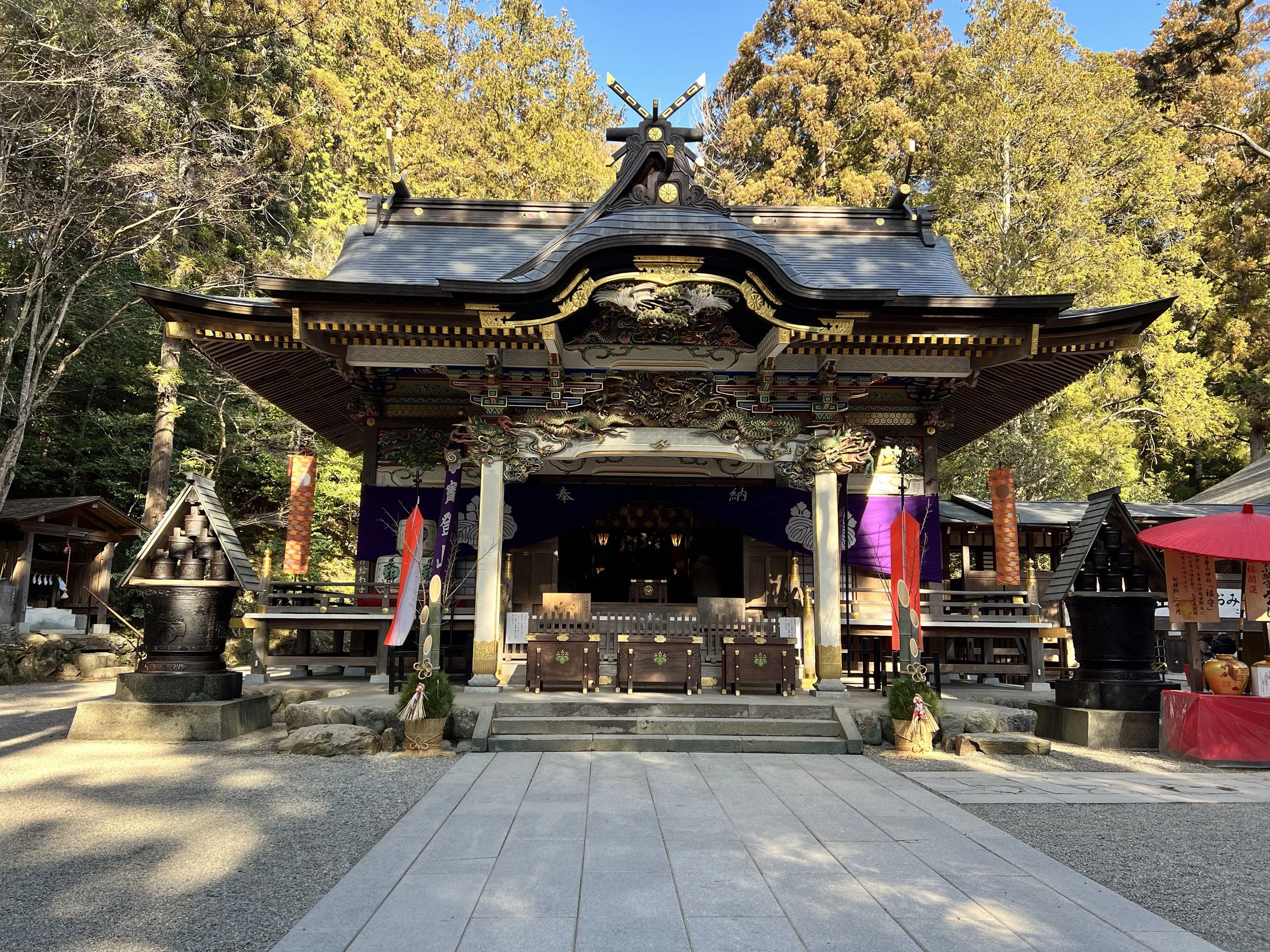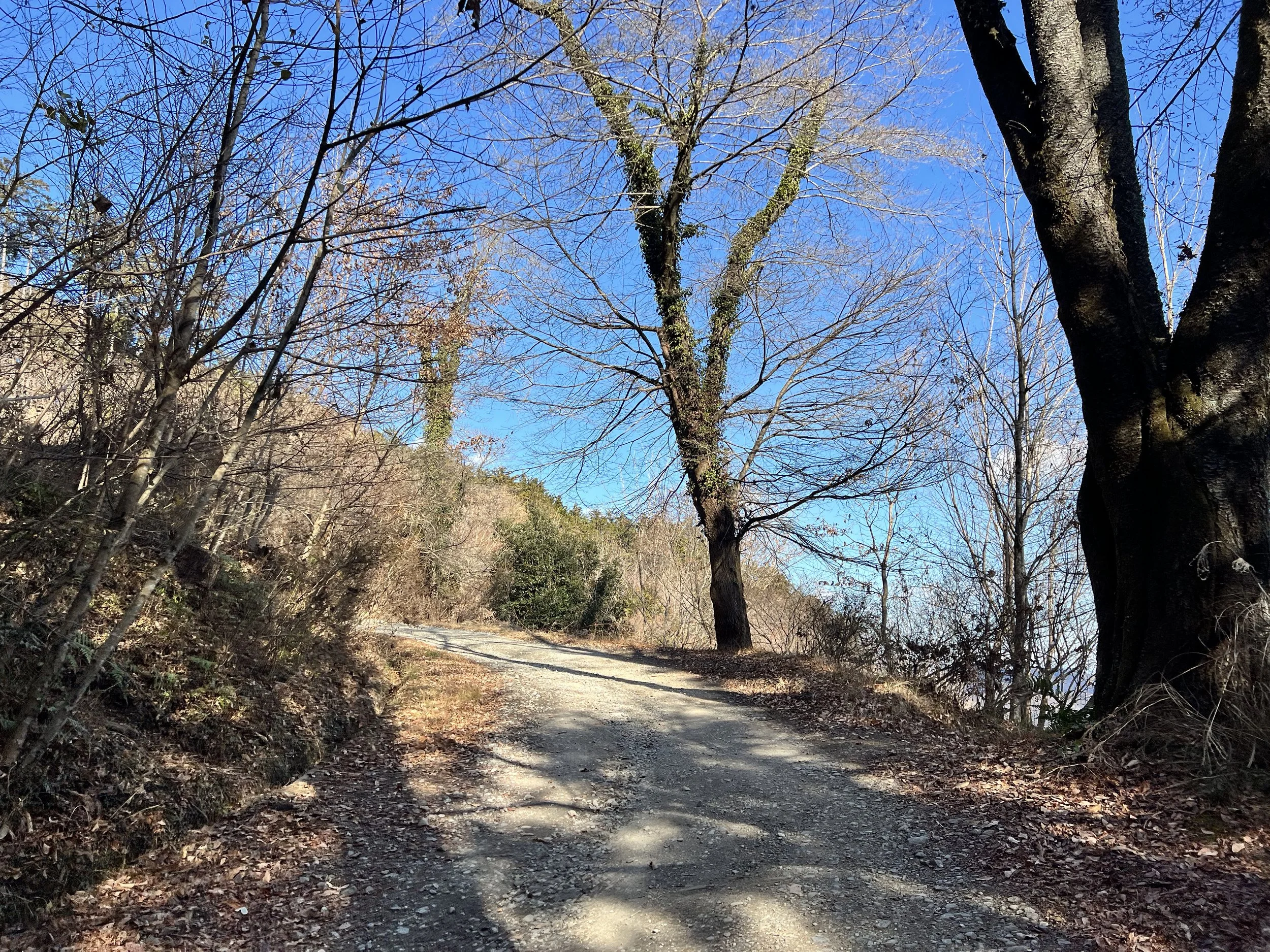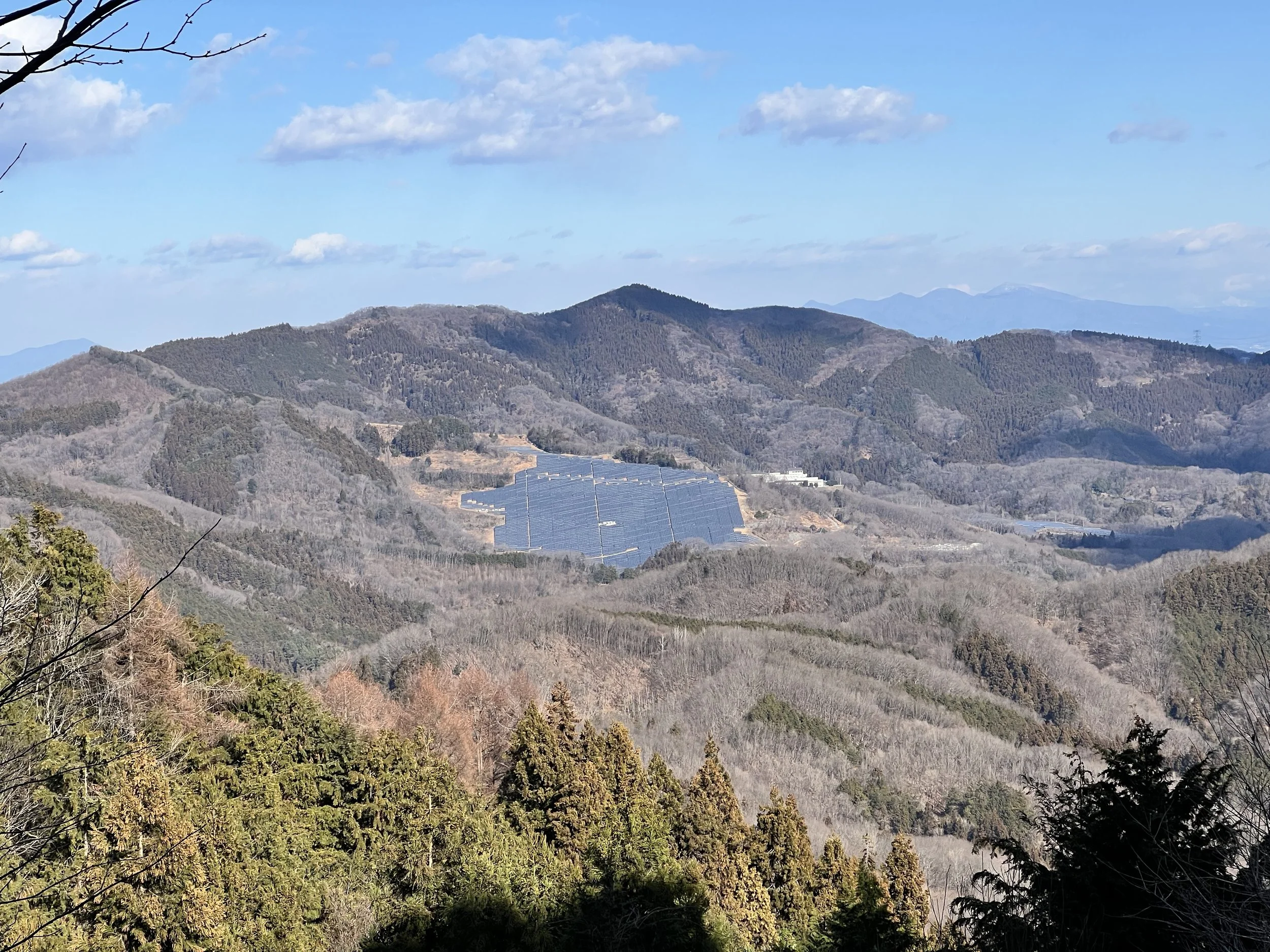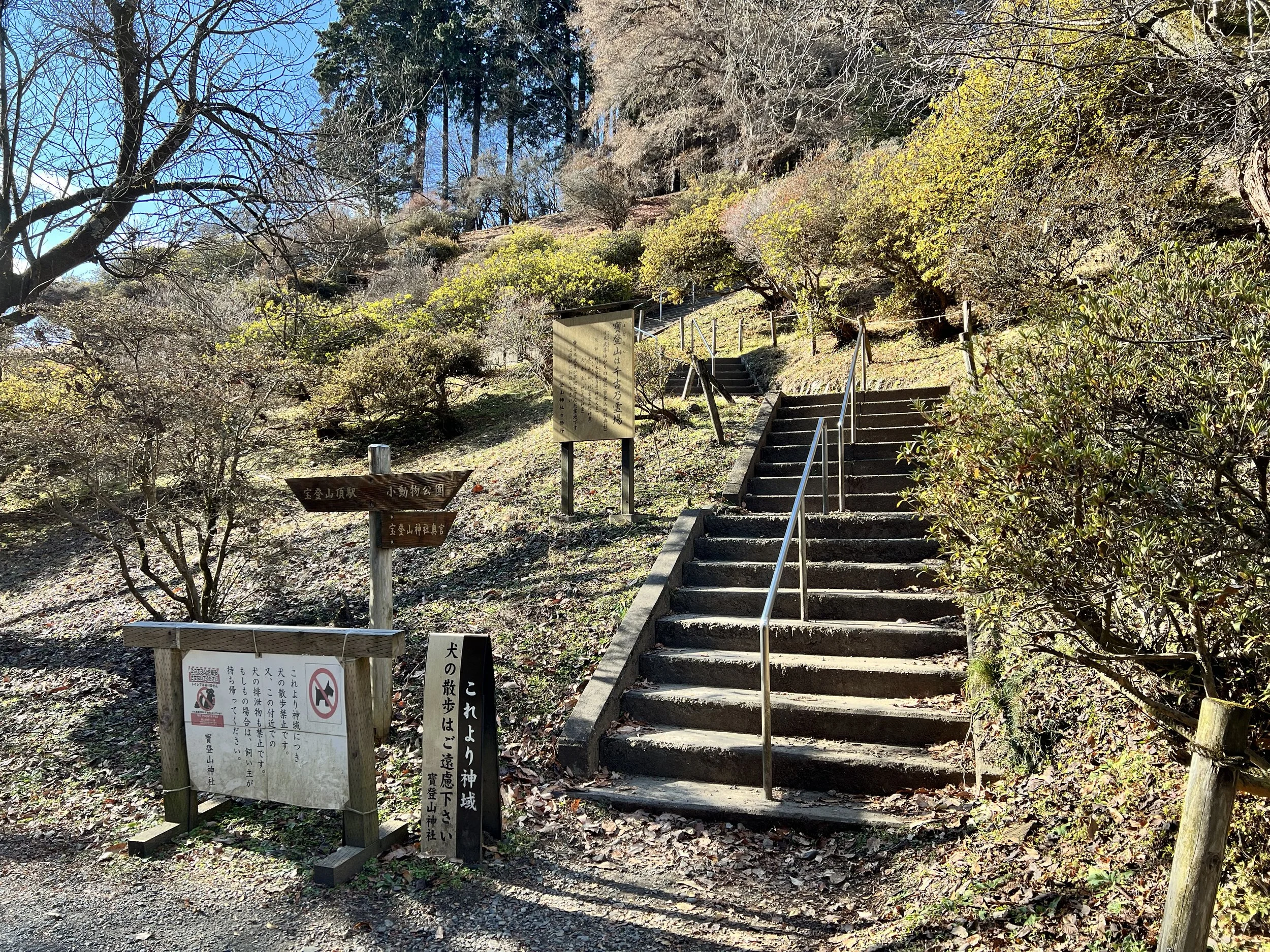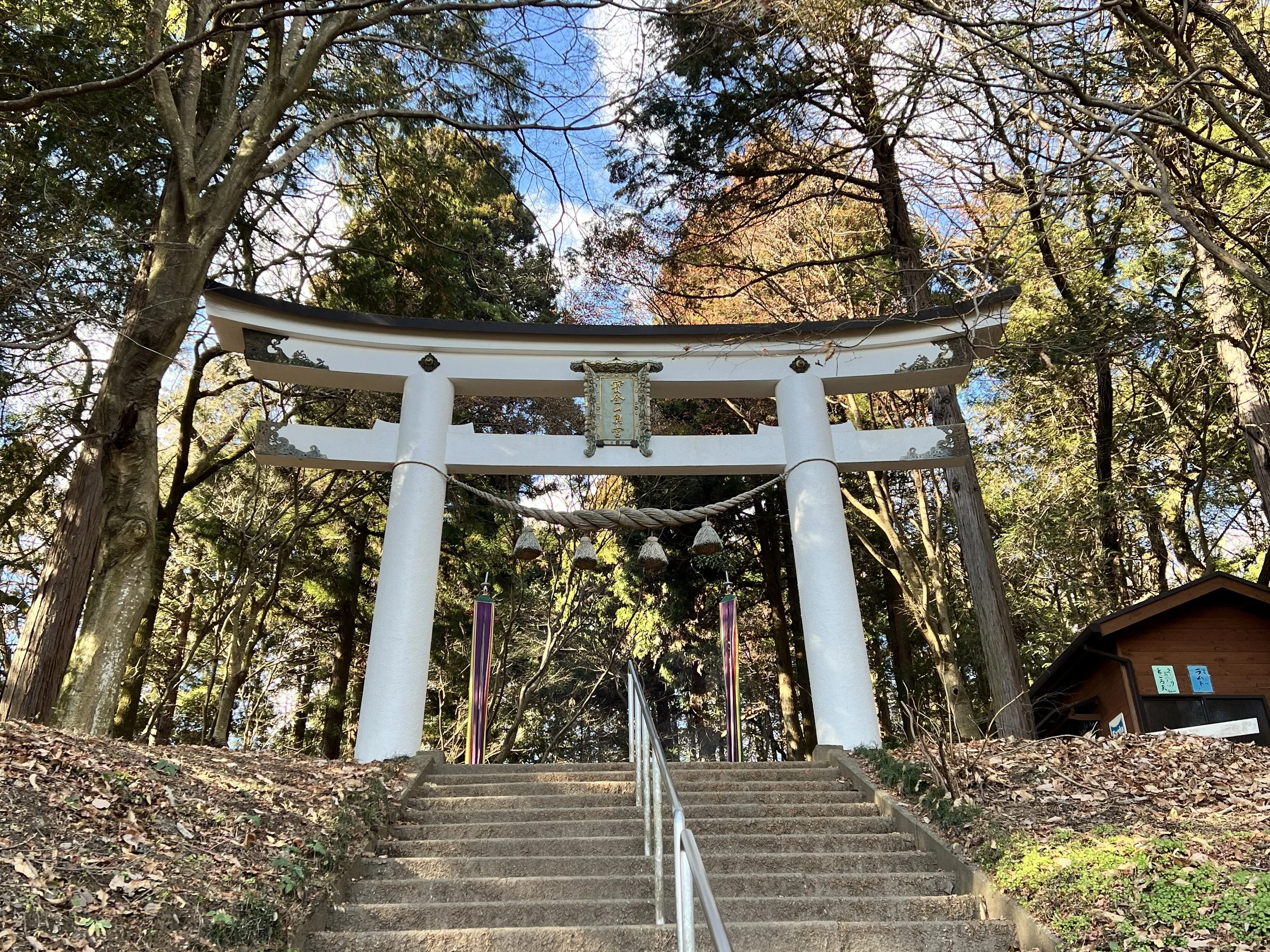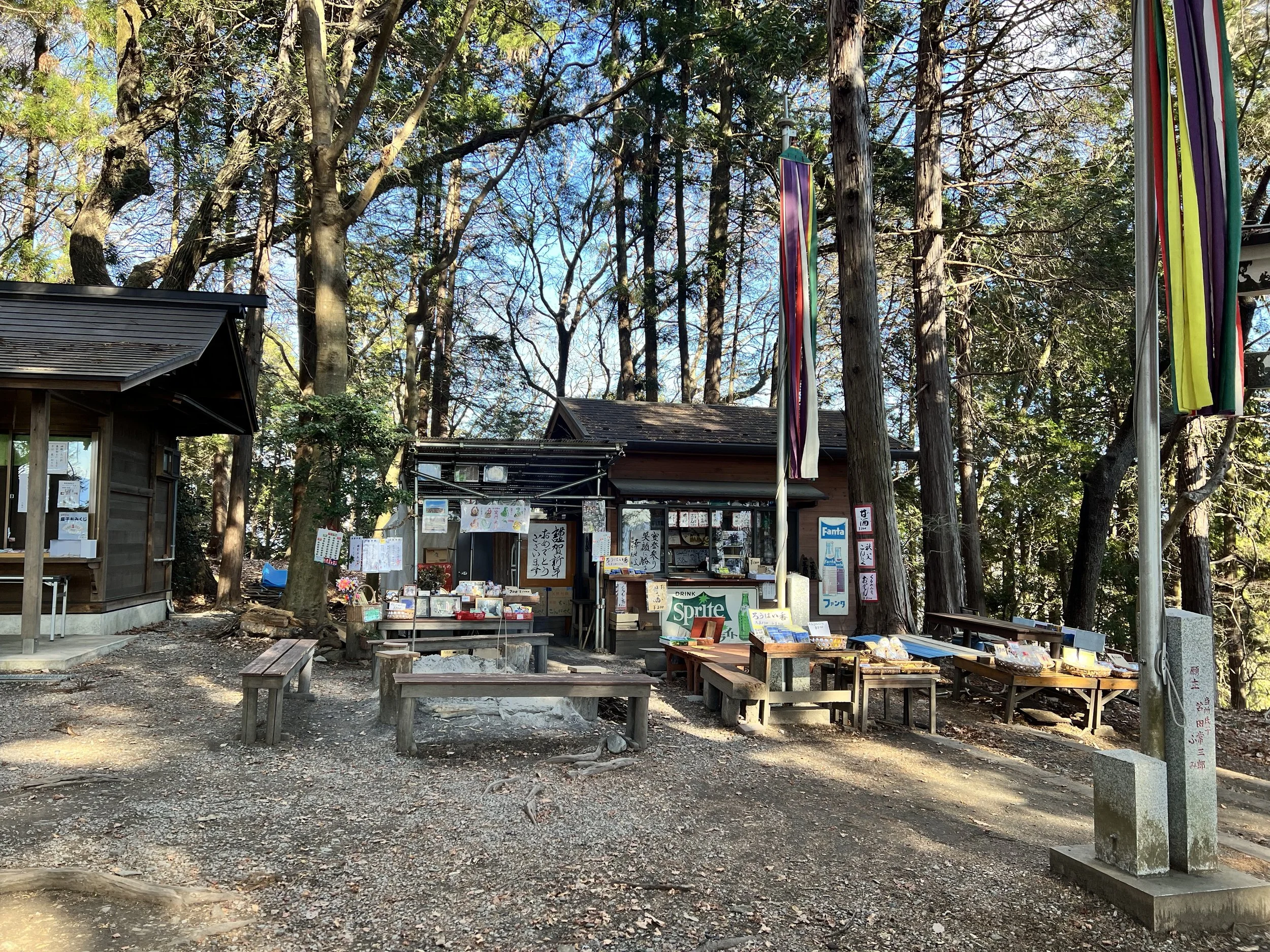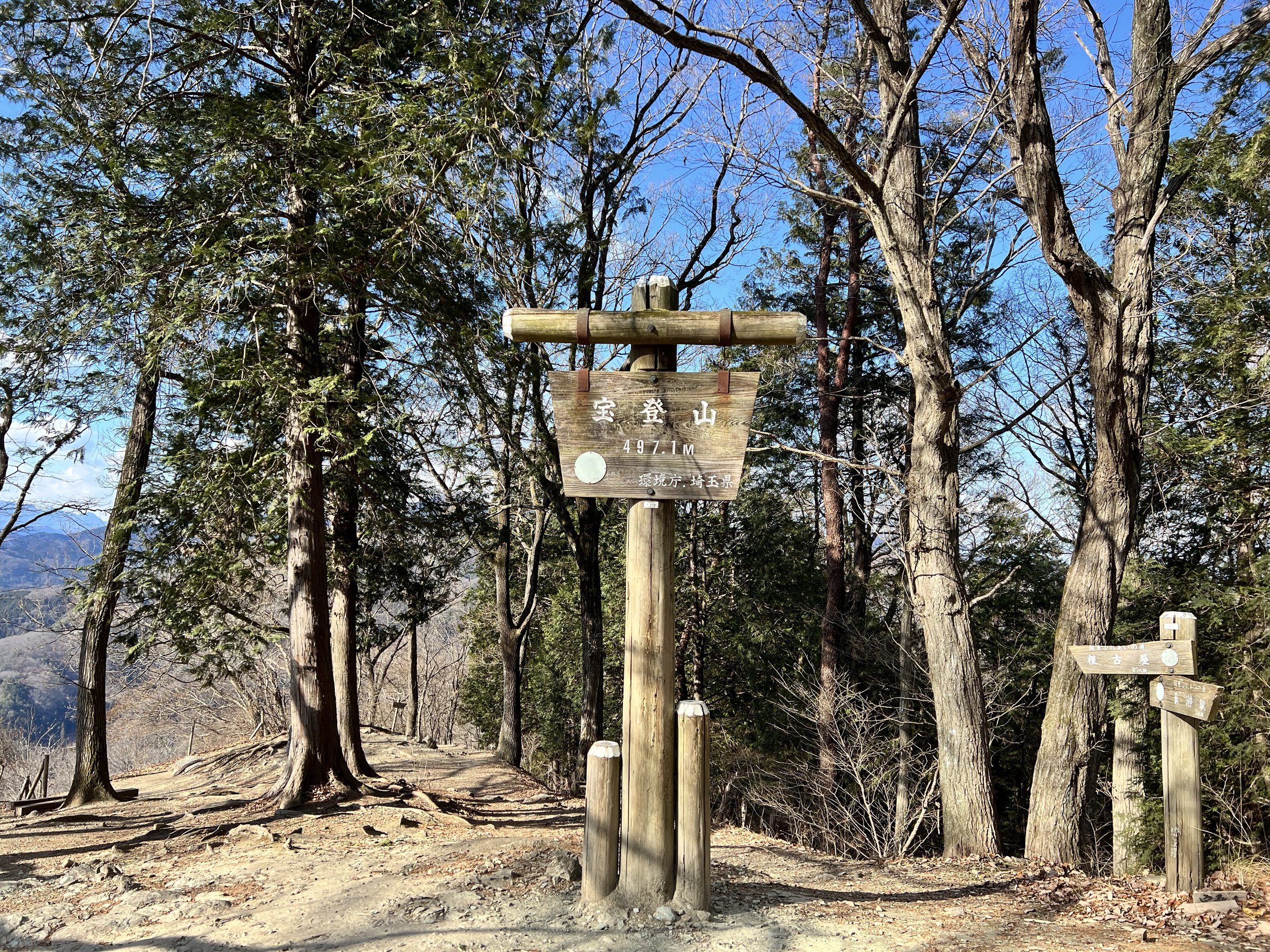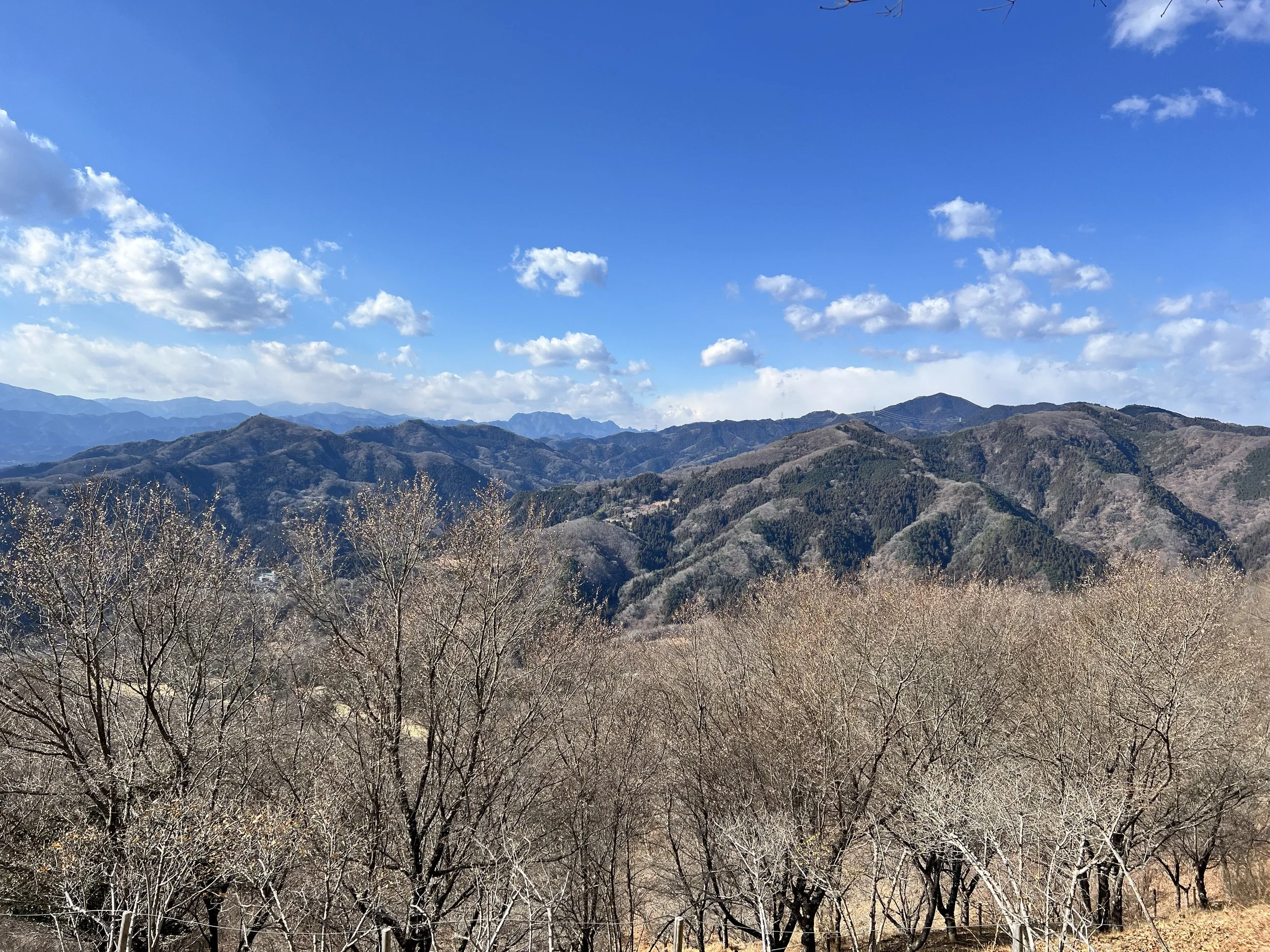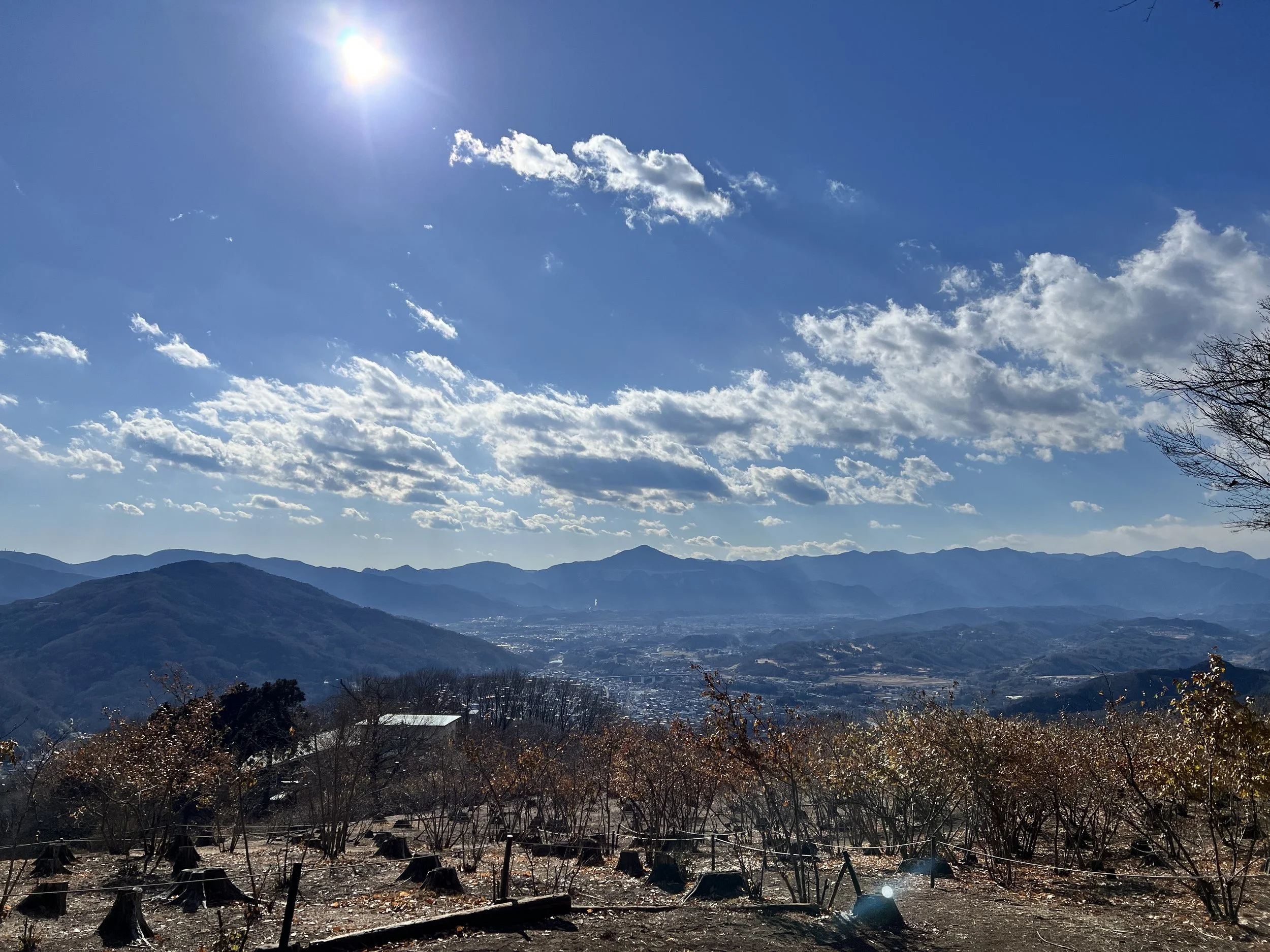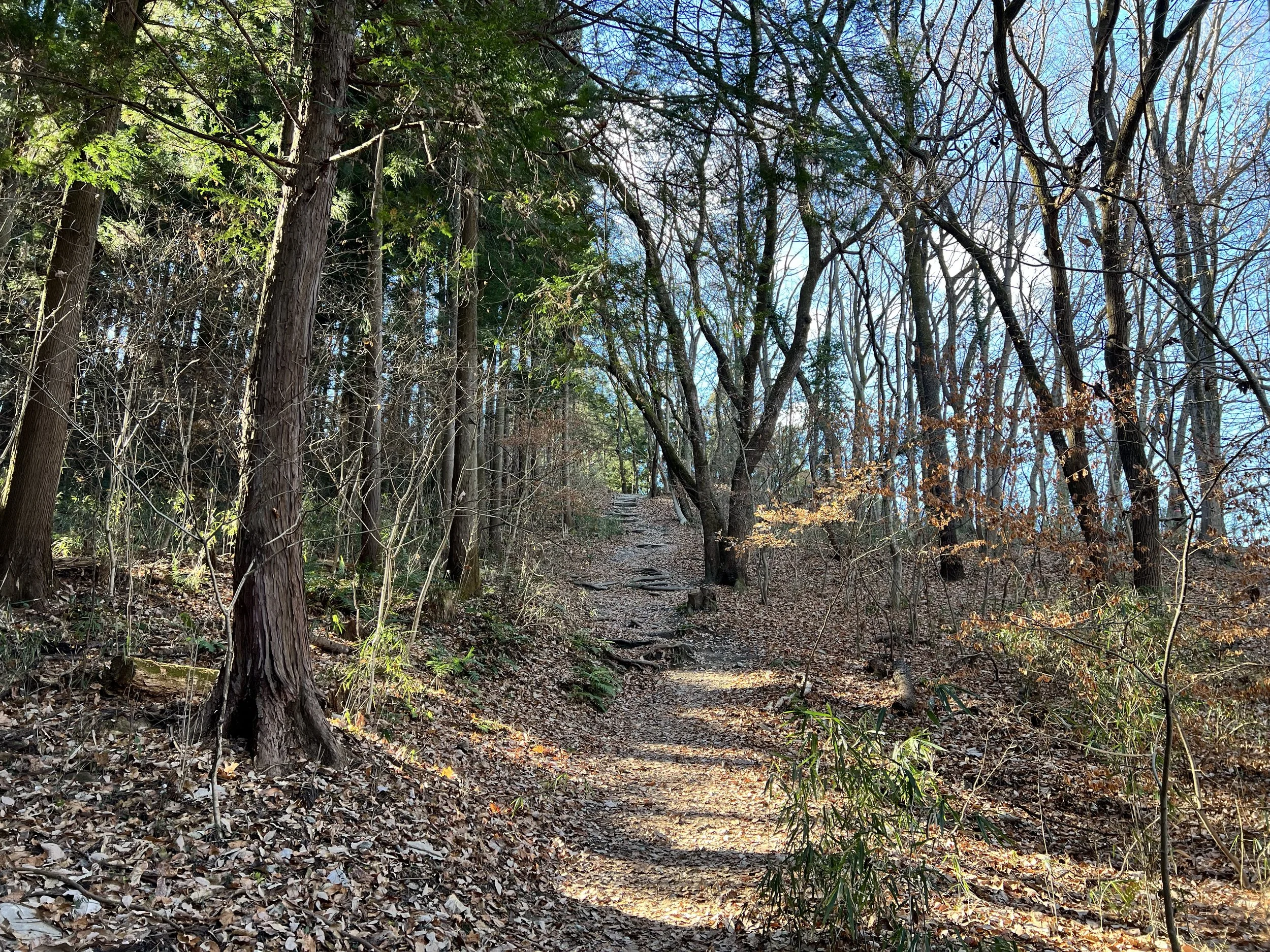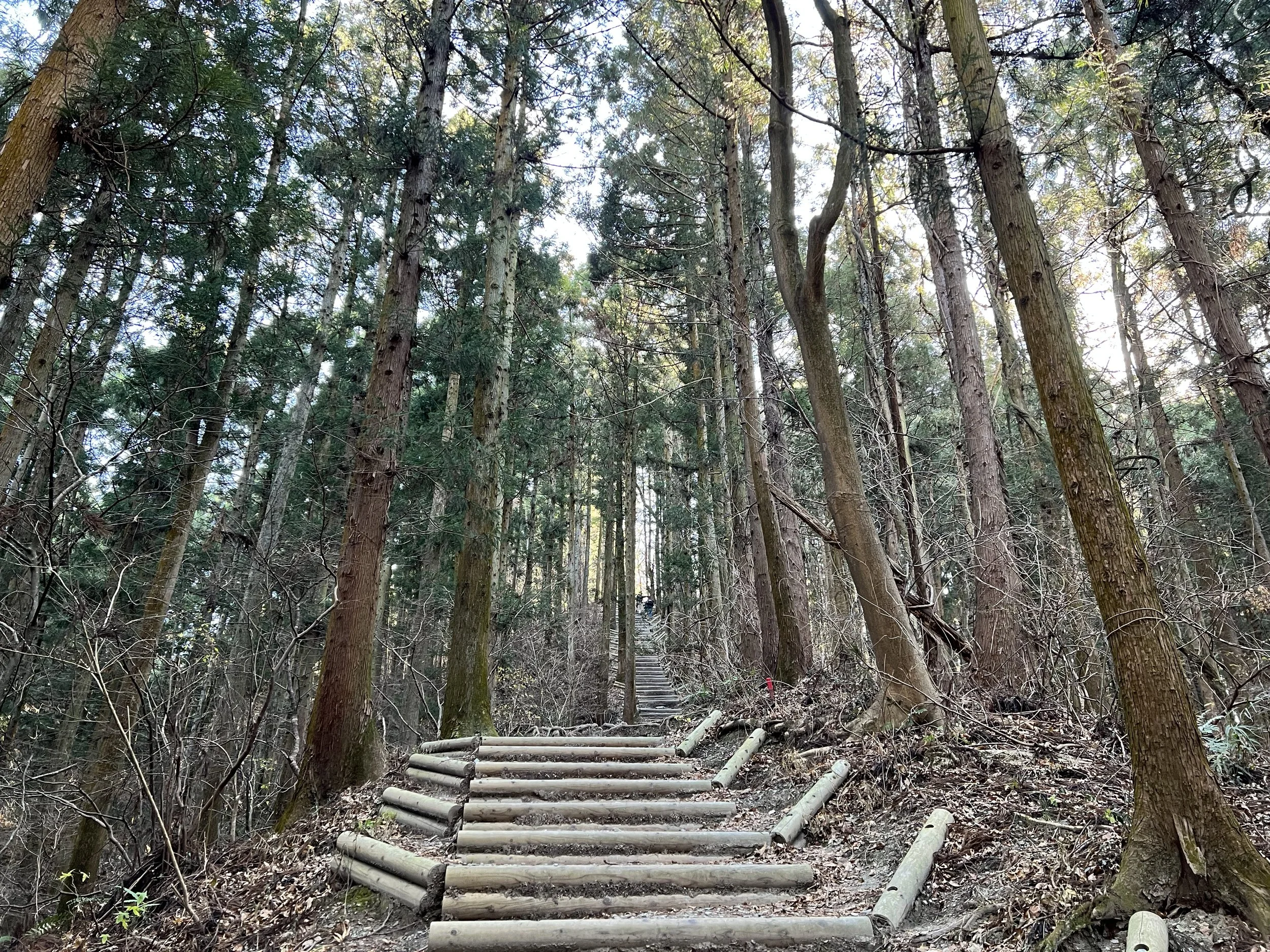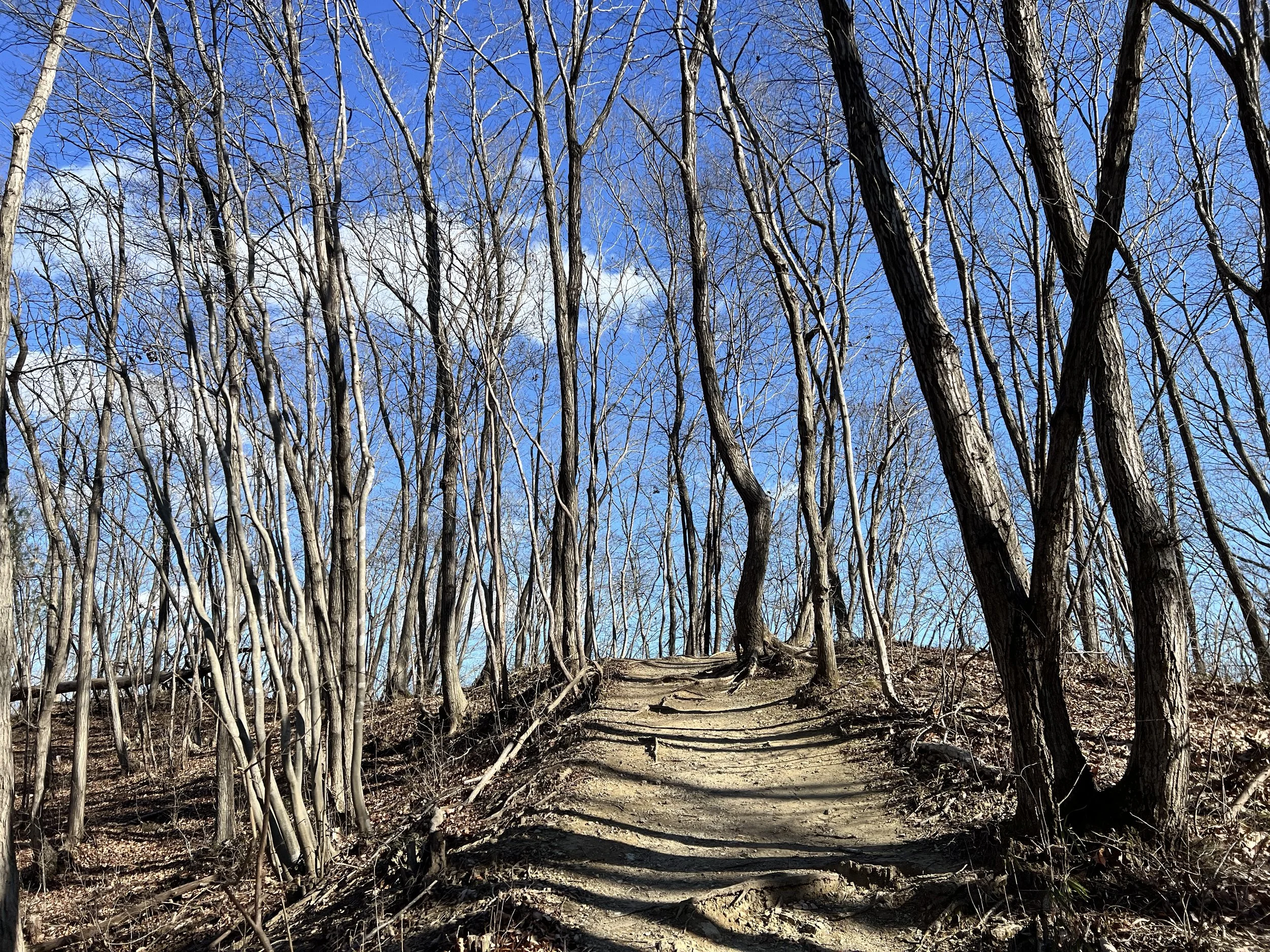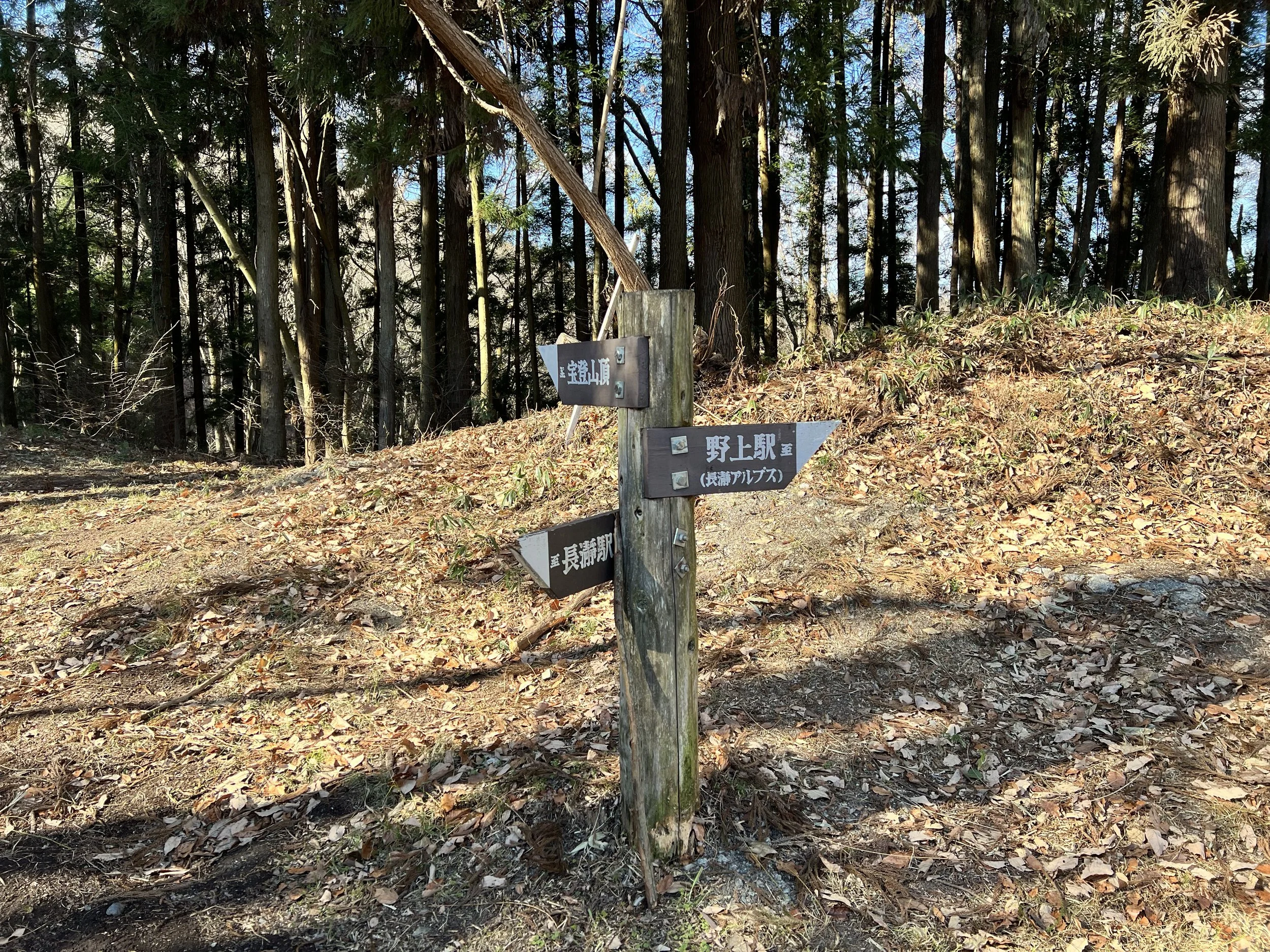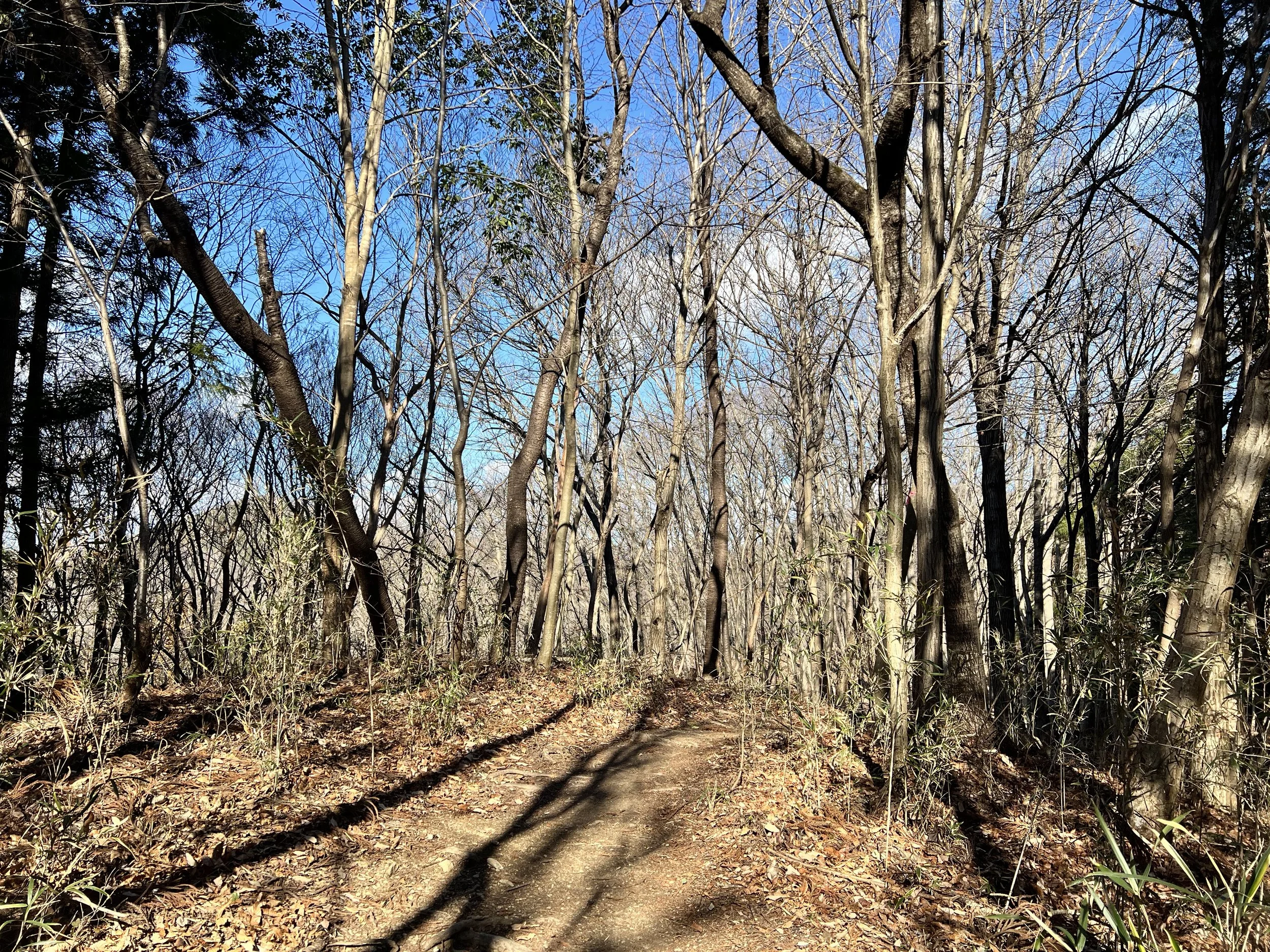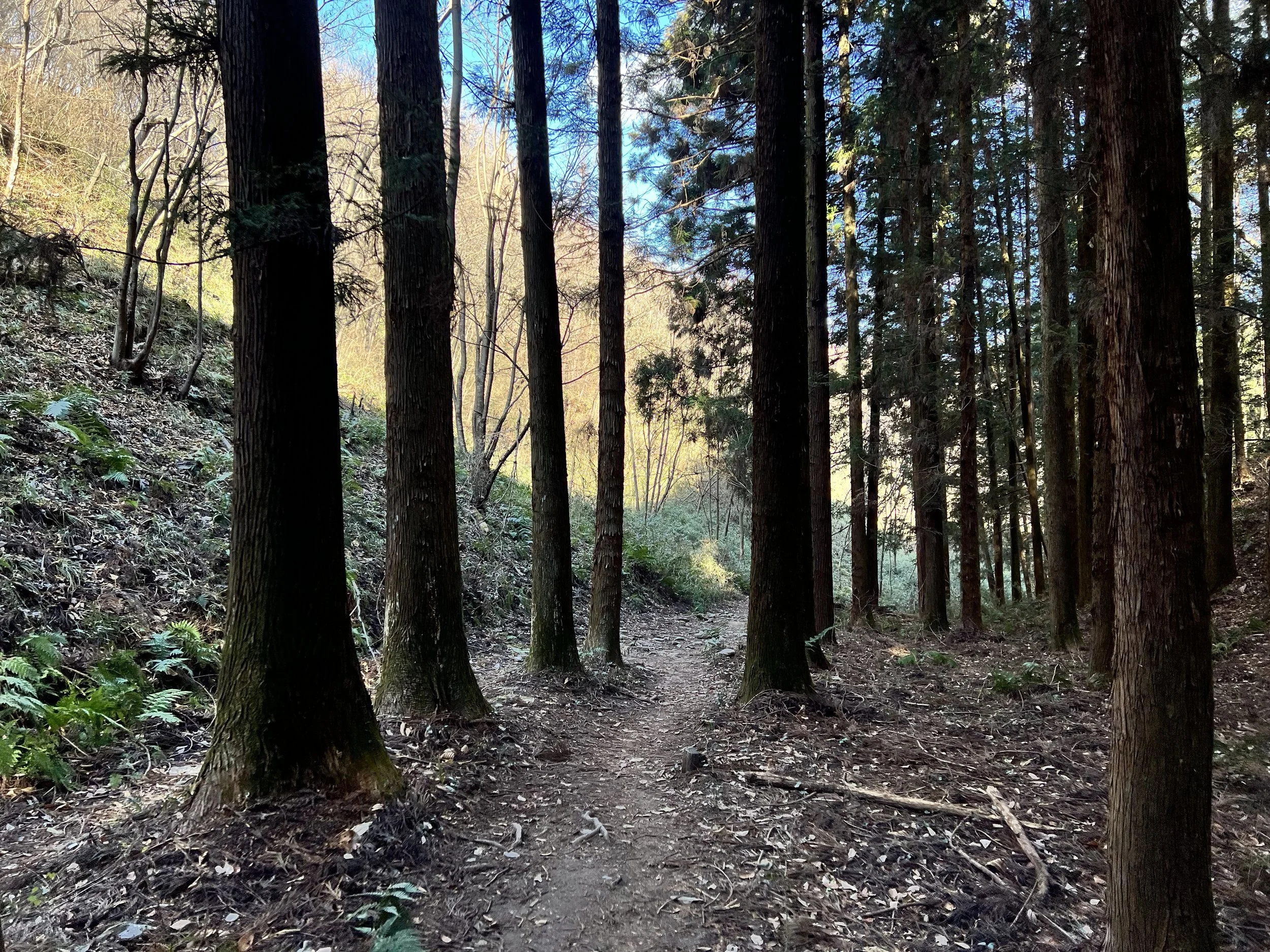Mount Hodo - Saitama, Japan
When I first looked up Nagatoro, I was mainly searching for hiking trails. Since I was staying in the Hanno area, it wasn’t too difficult to get to Chichibu, which has a good number of trails nearby. After choosing a route, I checked what else I could do in the area and came across Chichibu Shrine and Hodosan Shrine. From Seibu-Chichibu Station, it was only a short walk to Chichibu Shrine.
One thing I overlooked while planning my day was the onsen right next to Seibu-Chichibu Station. The exterior looked grand, and after seeing photos later, I really wished I had made time for it. As I walked toward Chichibu Shrine, the street was lined with cafés, traditional sweets shops, and small stores. At the end stood a giant torii gate marking the entrance to the shrine.
Chichibu Shrine is best known for its night festival held in early December, but I was more drawn to its history—it’s said to be over 1,000 years old. The current buildings date back to 1592, featuring intricate carvings of tigers, monkeys, and dragons, created by the same artist who decorated Nikko’s famous Toshogu Shrine. I wandered through the peaceful grounds, grateful that the New Year crowds had faded, leaving me free to admire the details at my own pace.
After my visit, I walked to Chichibu Station, not far away, and continued to Nagatoro Station. From there, I made my way toward Hodosan Shrine. The road leading up had a massive torii gate at the intersection. Hodosan Shrine sits at the foot of Mount Hodo and is known as a place to pray for protection against natural disasters. I didn’t stay long before heading toward the trailhead. There are two ways to reach the inner shrine at the summit—by cable car or hiking. Naturally, I chose to hike.
The trail was wide and gentle, more of a gravel road than a forest path, with great views of the surrounding area. It didn’t take long to reach the inner shrine. Even if you take the cable car, you’ll still need to climb a short staircase near the top. The first thing that greets you at the summit is a small shop before the shrine itself.
I spent a few moments browsing, offered a prayer, took some photos, and began my descent along the Nagatoro Alps Trail toward Nogami Station. The first part was a bit tricky—leaf-covered steps made it hard to see where to place my feet. I noticed more hikers coming up this route than the one I’d taken up. The trail wasn’t difficult, just more exposed since the trees were bare this time of year. Part of the route passes through private land, and there’s a donation box asking hikers to contribute ¥100 to help maintain the trail—a gesture that feels worth supporting.
I made it to Nogami Station with five minutes to spare before my train, relieved since the next one wouldn’t come for another hour. The Nagatoro and Chichibu area has so many trails that I wish I could’ve stayed a few more days to explore. I’ll definitely be back.
History & Background
Mount Hodo (497 m) – Mount Hodo is known for its gentle slopes and beautiful seasonal views, especially plum and cherry blossoms in spring. The mountain has long been associated with spiritual protection, and the inner shrine at its peak is dedicated to deities of safety and prosperity.
Hodosan Shrine – Founded nearly 2,000 years ago, Hodosan Shrine is one of the oldest in Saitama Prefecture. According to legend, its deity protected ancient travelers from volcanic fire, earning it a reputation as a place of refuge. Today, it remains a beloved spot to pray for protection from natural disasters and safe journeys.
Chichibu Shrine – With over a millennium of history, Chichibu Shrine is one of the region’s most important cultural sites. Rebuilt in 1592 under Tokugawa Ieyasu’s order, it’s famed for its vivid carvings of mythical creatures and its grand night festival each December.
Getting There
Nagatoro is easy to reach by train or car, though it may require one to three transfers from Tokyo. I started my journey from Higashi-Hanno on the Seibu-Chichibu Line to Seibu-Chichibu Station. From there, I took some time to explore the nearby shrine and old shopping street before boarding the Chichibu Main Line at Chichibu Station and continuing on to Nagatoro Station.
Route Overview
Distance: 10.01 km (Nagatoro Station → Nogami Station)
Total elevation gain: 504 m
Duration: 2 hr 12 min (with breaks 2 hr 16 min)
Difficulty: Intermediate
Peaks: Mt Hodosan 宝登山 497m
Cost Breakdown
Train: Higashi-Hanno Station → Nagatoro Station — ¥970
Trail Usage Fee: ¥100
